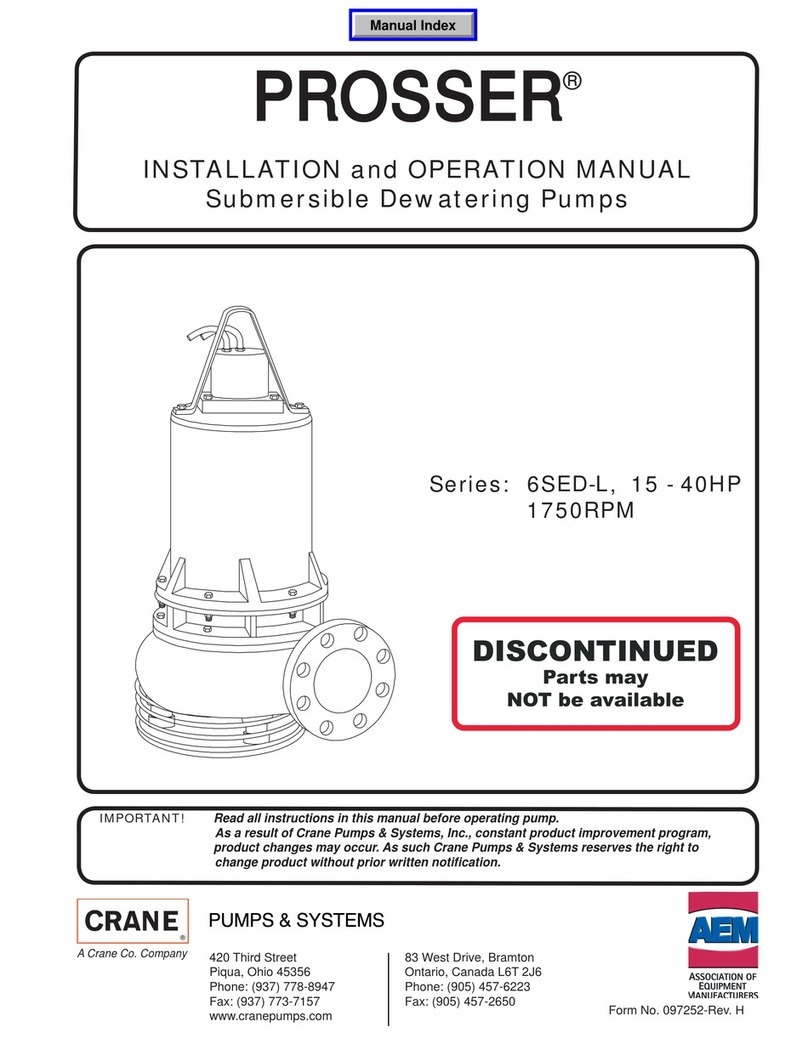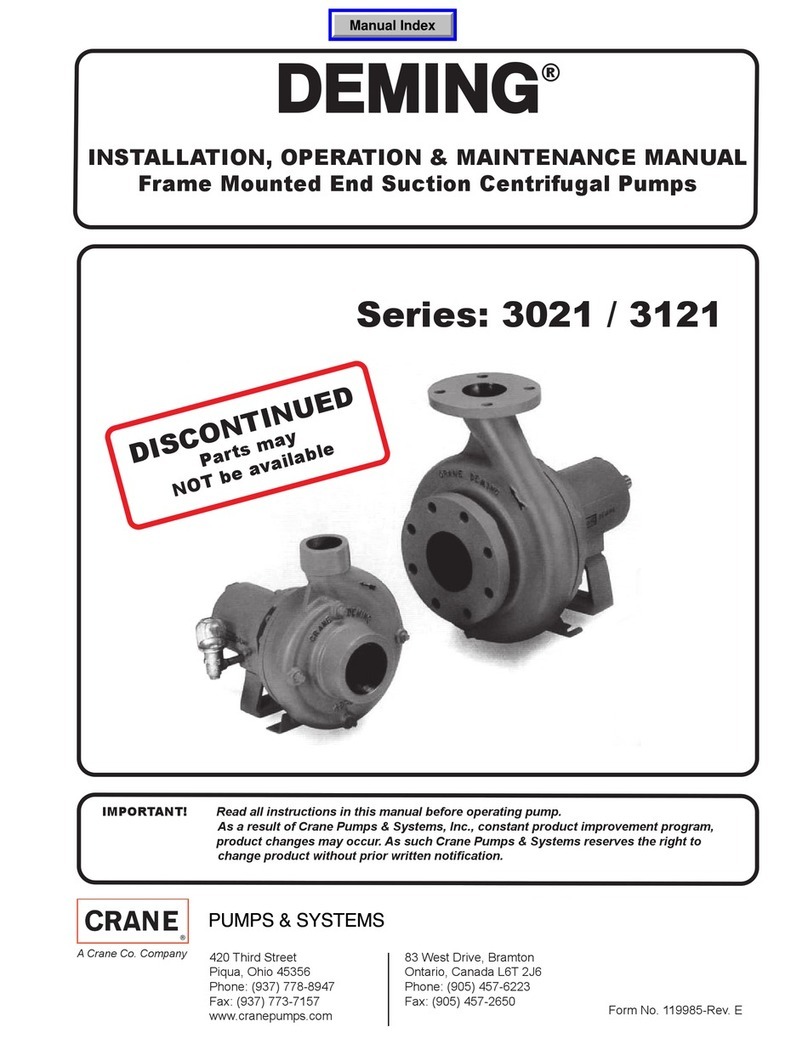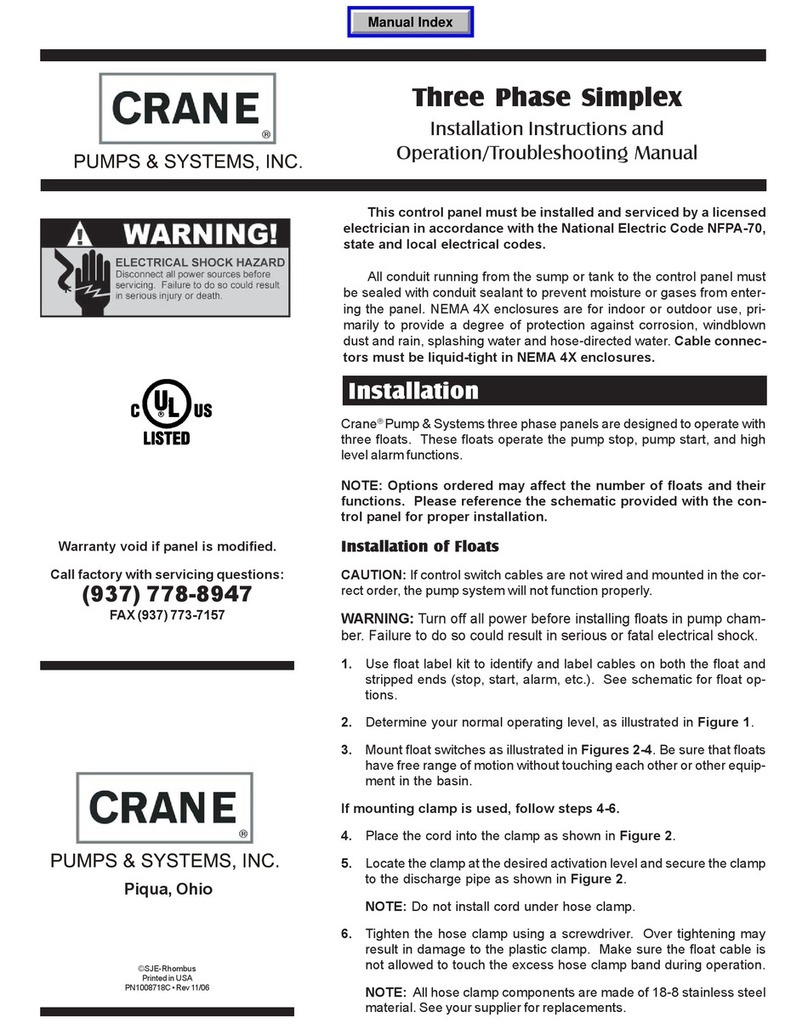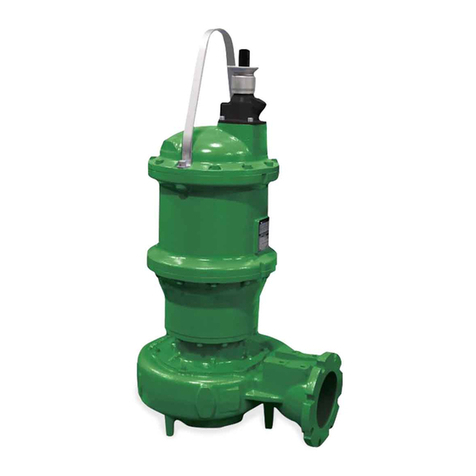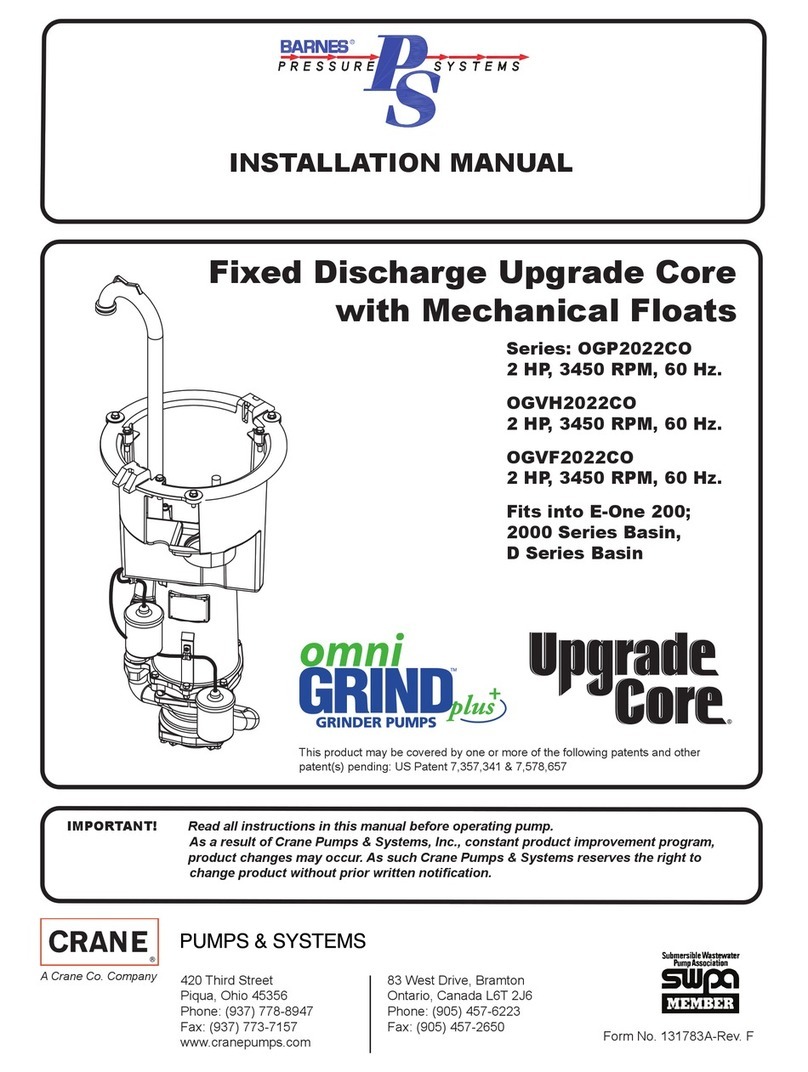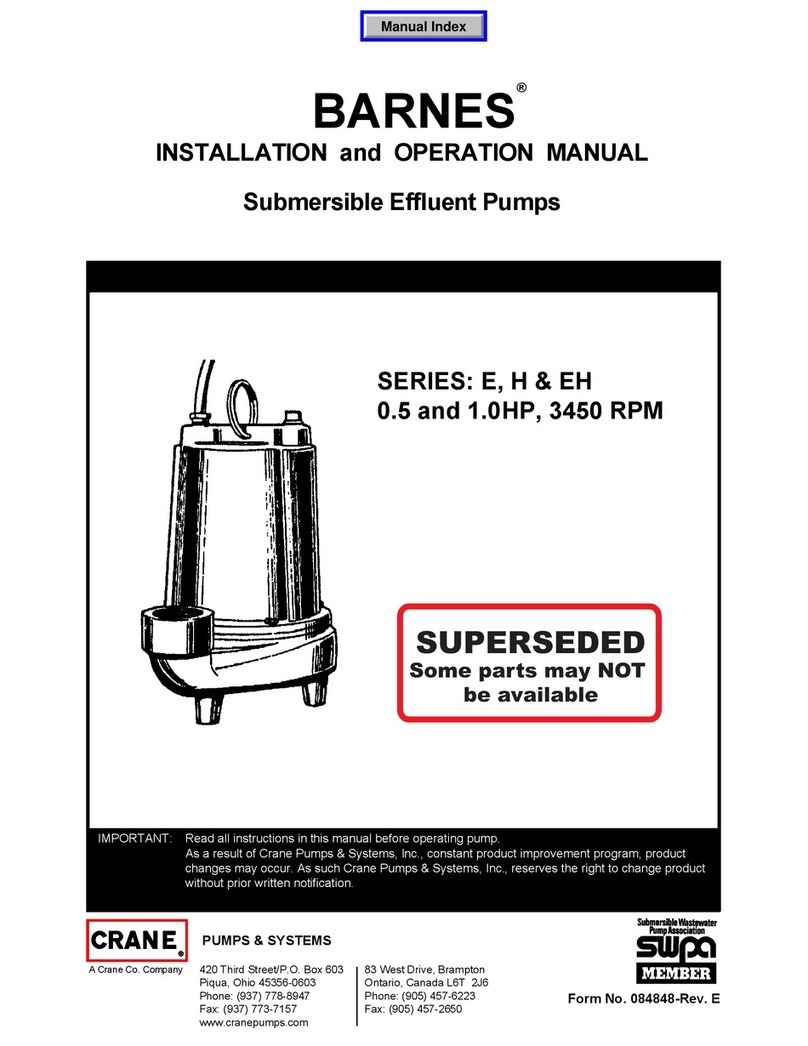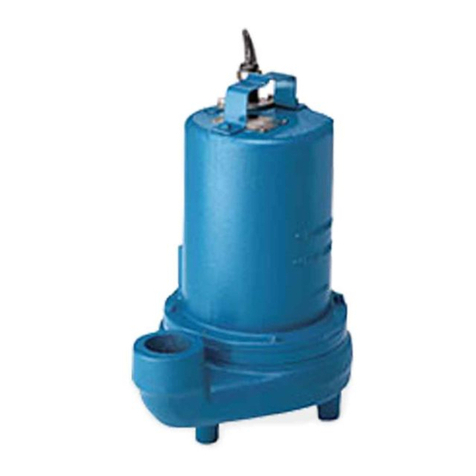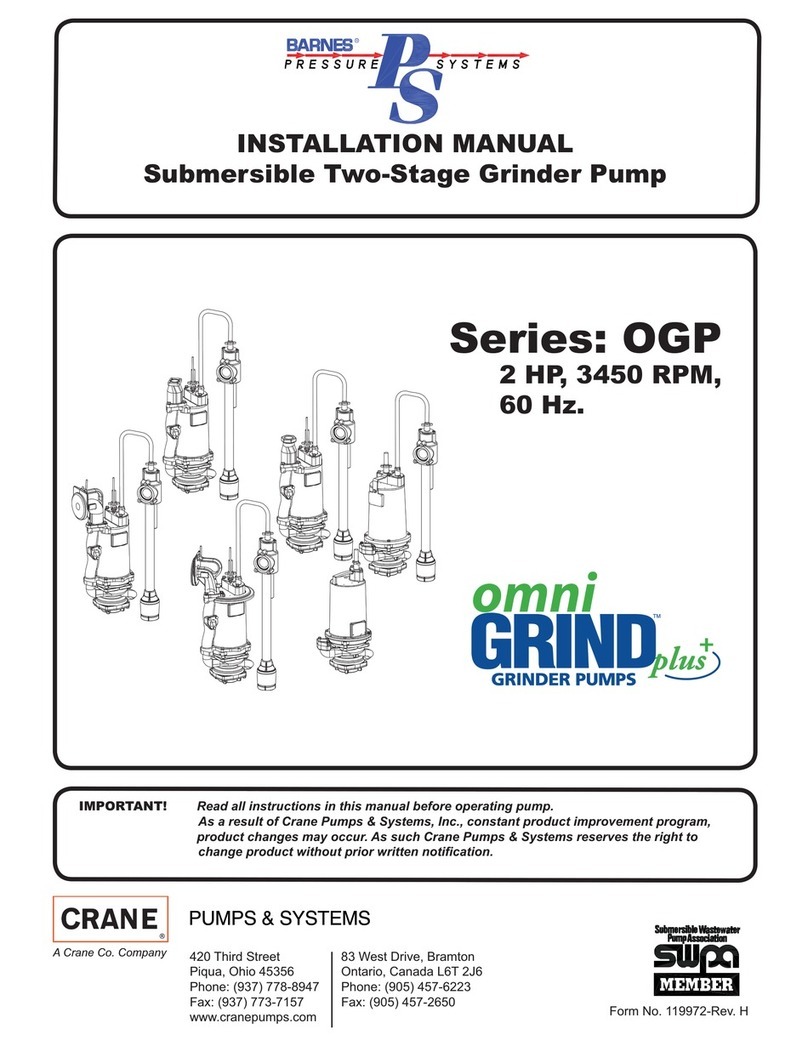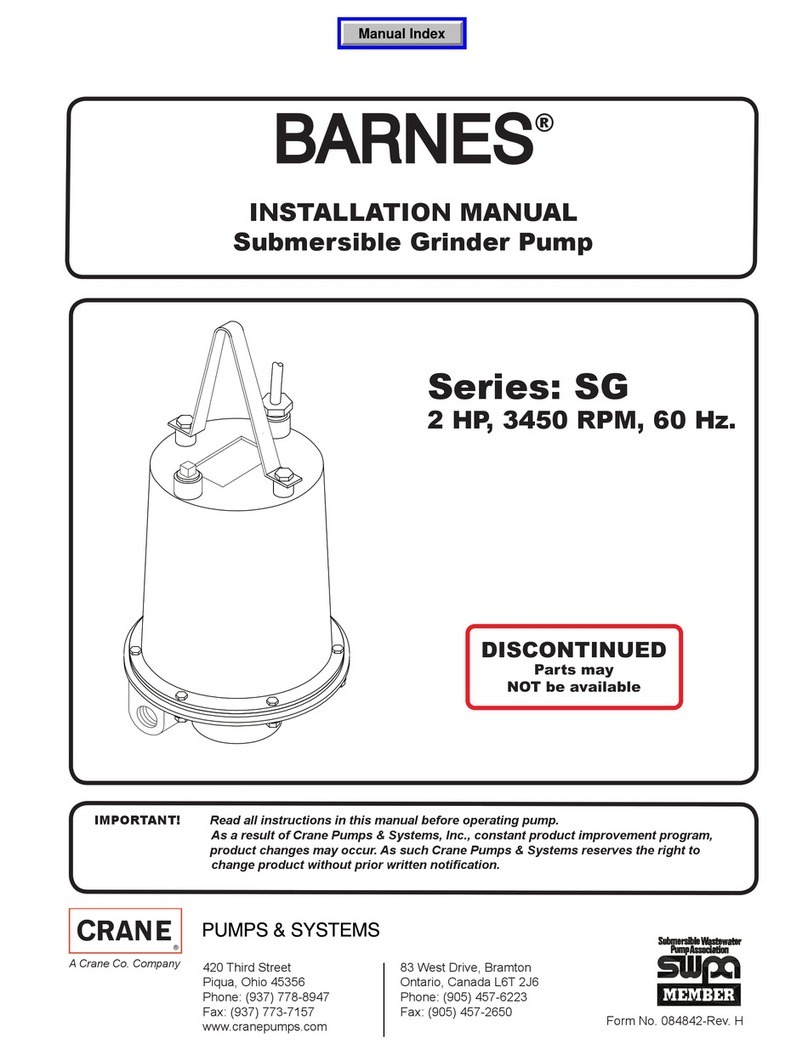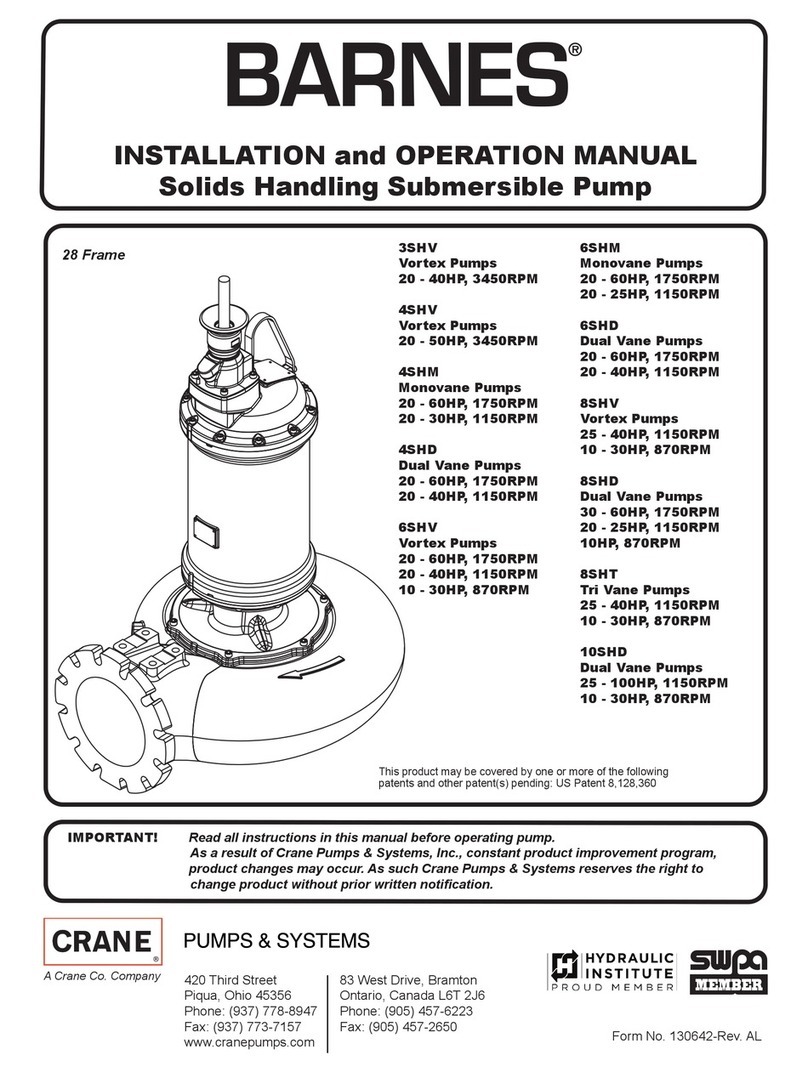
3
Please Read This Before Installing Or Operating Pump.
This information is provided for SAFETY and to PREVENT
EQUIPMENT PROBLEMS. To help recognize this information,
observe the following symbols:
IMPORTANT! Warns about hazards that can result
in personal injury or Indicates factors concerned with
assembly, installation, operation, or maintenance which
could result in damage to the machine or equipment if
ignored.
CAUTION ! Warns about hazards that can or will cause minor
personal injury or property damage if ignored. Used with symbols
below.
WARNING ! Warns about hazards that can or will cause serious
personal injury, death, or major property damage if ignored. Used
with symbols below.
Only qualied personnel should install, operate and repair
pump. Any wiring of pumps should be performed by a qualied
electrician.
WARNING ! - To reduce risk of electrical shock, pumps
and control panels must be properly grounded in
accordance with the National Electric Code (NEC) or the
Canadian Electrical Code (CEC) and all applicable state,
province, local codes and ordinances.
Prior to energizing the pump, a verication of the
pump ground circut should be made between the
pump case and panel ground
WARNING! - To reduce risk of
electrical shock, always disconnect
the pump from the power source
before handling or servicing. Lock out
power and tag.
WARNING! Operation against a closed discharge valve will
cause premature bearing and seal failure on any pump, and
on end suction and self priming pump the heat build may
cause the generation of steam with
resulting dangerous pressures. It
is recommended that a high case
temperature switch or pressure relief
valve be installed on the pump body.
CAUTION! Pumps build up heat and pressure during
operation-allow time for pumps to cool before handling
or servicing.
WARNING! - DO NOT pump hazardous materials
(ammable, caustic, etc.) unless the pump is specically
designed and designated to handle them.
Do not block or restrict discharge hose, as discharge
hose may whip under pressure.
WARNING! - DO NOT wear loose clothing that may
become entangled in the impeller or other moving parts.
WARNING! - Keep clear of suction and discharge
openings. DO NOT insert ngers in pump with power
connected.
Always wear eye protection when working on pumps.
Make sure lifting handles are securely fastened each
time before lifting. DO NOT operate pump without
safety devices in place. Always replace safety devices
that have been removed during service or repair.
Secure the pump in its operating position so it can not
tip over, fall or slide.
DO NOT exceed manufacturers recommendation for
maximum performance, as this could cause the motor
to overheat.
DO NOT remove cord and strain relief. Do not connect
conduit to pump.
WARNING! Cable should be protected at all times to
avoid punctures, cut, bruises and abrasions - inspect
frequently. Never handle connected power cords with
wet hands.
WARNING! To reduce risk of electrical shock, all wiring
and junction connections should be made per the NEC
or CEC and applicable state or province and local
codes. Requirements may vary depending on usage
and location.
WARNING! Submersible Pumps are not approved for use in
swimming pools, recreational water installations,
decorative fountains or any installation where human
contact with the pumped uid is common.
WARNING! Products Returned Must Be Cleaned,
Sanitized, Or Decontaminated As Necessary Prior
To Shipment, To Insure That Employees Will Not Be
Exposed To Health Hazards In Handling Said Material.
All Applicable Laws And Regulations Shall Apply.
Bronze/brass and bronze/brass tted pumps may
contain lead levels higher than considered safe for
potable water systems. Lead is known to cause cancer
and birth defects or other reproductive harm. Various
government agencies have determined that leaded copper alloys
should not be used in potable water applications. For
non-leaded copper alloy materials of construction,
please contact factory.
IMPORTANT! - Crane Pumps & Systems, Inc. is not responsible
for losses, injury, or death resulting from a failure to observe
these safety precautions, misuse or abuse of pumps or
equipment.
SAFETY FIRST!
Hazardous uids can
cause re or explo-
sions, burns or death
could result.
Extremely hot -
Severe burnes can
occur on contact.
Biohazard can cause
serious personal injury.
Hazardous uids can Hazardous
pressure, eruptions or explosions
could cause personal injury or
property damage.
Rotating machinery
Amputation or severe
laceration can result.
Hazardous voltage can shock,
burn or cause death.





